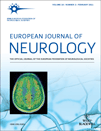A novel missense mutation in GTP cyclohydrolase I (GCH1) gene causes dopa-responsive dystonia in Chinese Han population
Abstract
Background: Dopa-responsive dystonia has been shown to be caused by a number of different mutations in the GCH1 gene. Up to now, only several genetic studies of Chinese patients with Dopa-responsive dystonia (DRD) have been reported.
Methods: We performed a genetic analysis by amplifying the entire coding region of GCH1 gene and direct sequencing in four DRD families from mainland China.
Results: A novel missense mutation, Gly155Ser, has been identified in a sporadic case from a consanguineous marriage family. Furthermore, two known mutations, Met137Arg and Gly203Arg, have also been detected in the other families.
Conclusions: A novel missense mutation in the GCH1 gene can be associated with DRD. Our findings further expanded the mutational spectrum of GCH1 gene associated with DRD.




